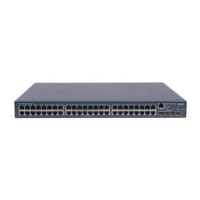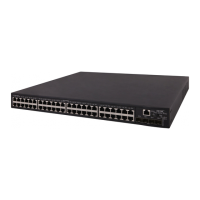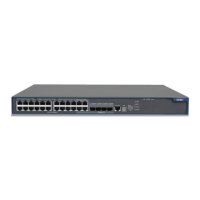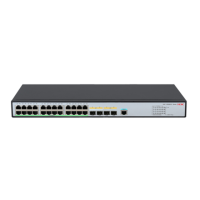Features Description
GVRP
GVRP is a GARP application. This document describes:
z GARP overview
z GVRP configuration
z GARP Timers configuration
QinQ
As defined in IEEE802.1Q, 12 bits are used to identify a VLAN ID, so a
device can support a maximum of 4094 VLANs. The QinQ feature
extends the VLAN space by allowing Ethernet frames to travel across the
service provider network with double VLAN tags. This document
describes:
z Introduction to QinQ
z Configuring basic QinQ
z Configuring Selective QinQ
z Configuring the TPID Value in VLAN Tags
BPDU Tunnel
BPDU tunneling enables transparently transmission of customer network
BPDU frames over the service provider network. This document
describes:
z Introduction to BPDU Tunneling
z Configuring BPDU Transparent Transmission
z Configuring Destination Multicast MAC Address for BPDU Tunnel
Frames
Ethernet OAM
Ethernet OAM is a tool monitoring Layer-2 link status. It helps network
administrators manage their networks effectively. This document
describes:
z Ethernet OAM overview
z Configuring Basic Ethernet OAM Functions
z Configuring Link Monitoring
z Enabling OAM Loopback Testing
Connectivity Fault
Detection
Connectivity fault detection is an end-to-end, per-VLAN link-layer OAM
mechanism for link connectivity detection, fault verification, and fault
location. This document describes:
z Connectivity Fault Detection Overview
z Basic Configuration Tasks
z Configuring CC on MEPs
z Configuring LB on MEPs
z Configuring LT on MEPs
RRPP
RRPP is a link layer protocol designed for Ethernet rings. RRPP can
prevent broadcast storms caused by data loops when an Ethernet ring is
healthy, and rapidly restore the communication paths between the nodes
after a link is disconnected on the ring. This document describes:
z RRPP overview
z Configuring Master Node
z Configuring Transit Node
z Configuring Edge Node
z Configuring Assistant Edge Node
z Configuring Ring Group

